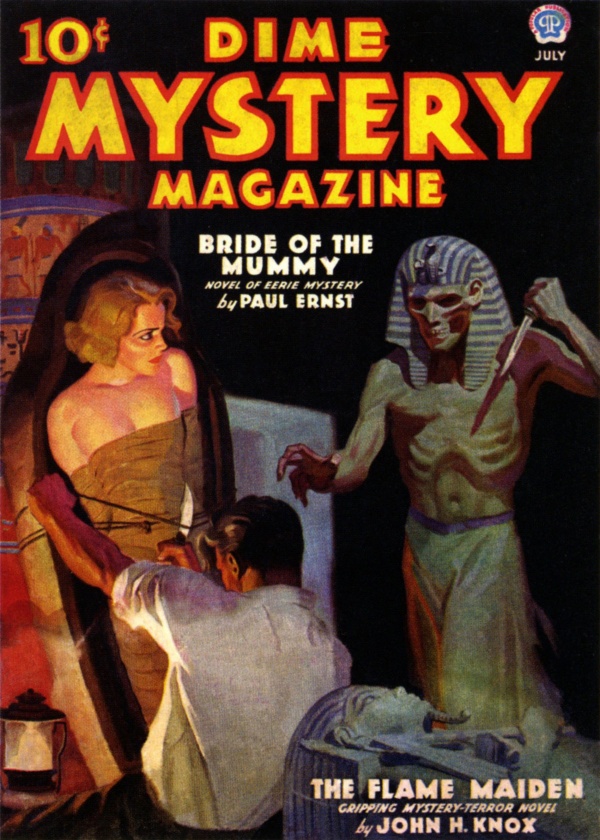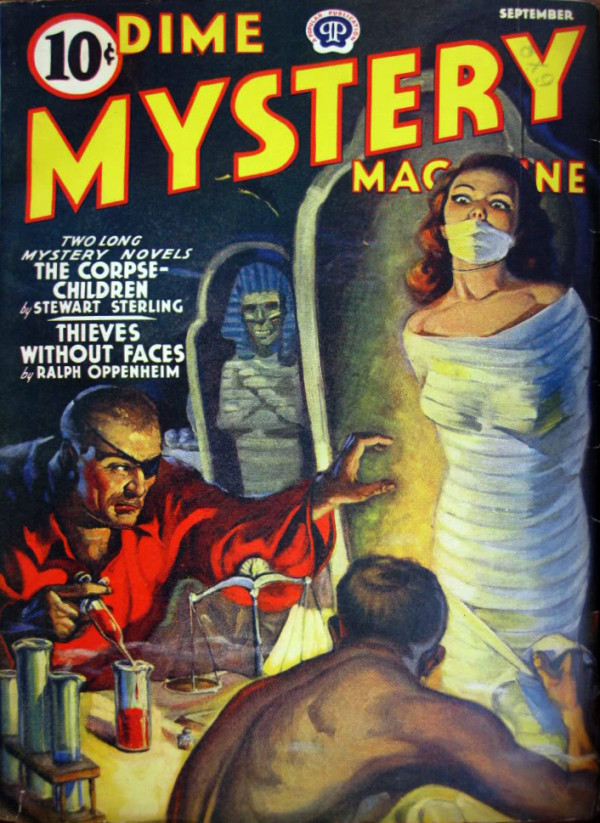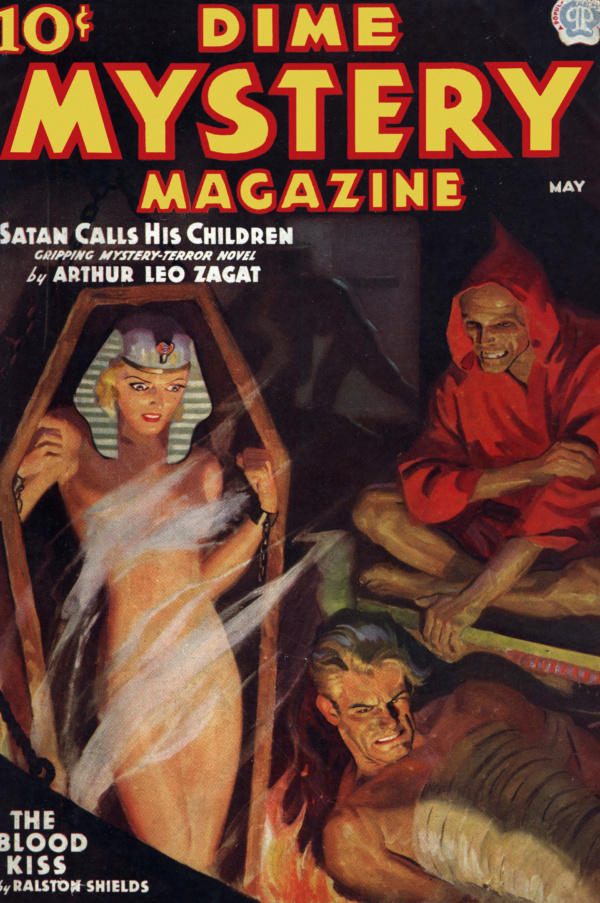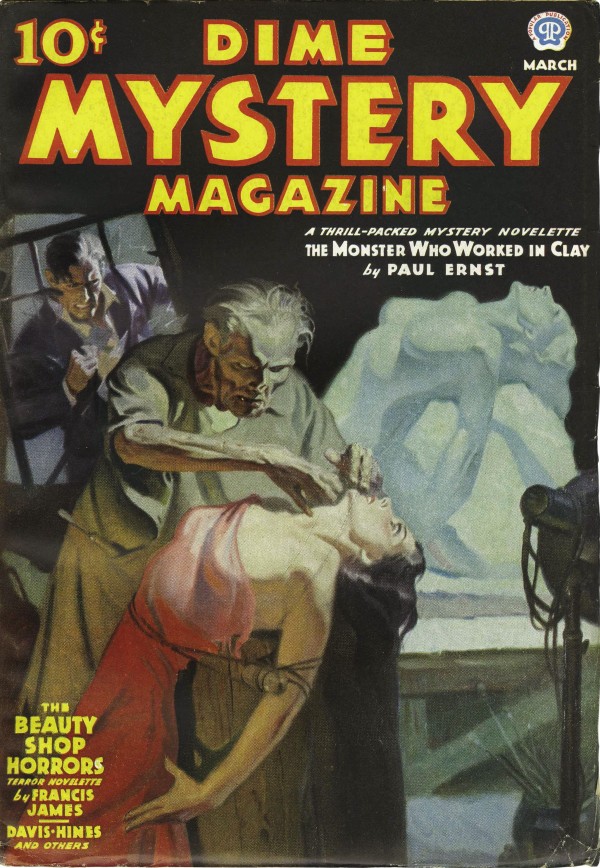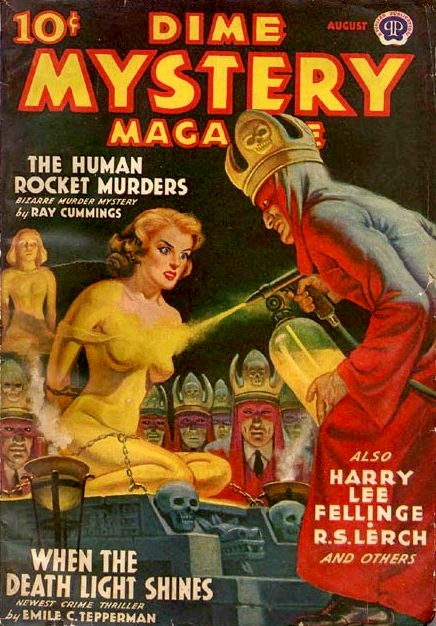Fire is a fearsome thing when you’re in it or might be, and so unsurprisingly there are a lot of Dime Mystery Magazine covers showing pretty women facing the hideous prospect of being burned alive. Indeed, there are so many that I had to break the meme into two separate posts. For want of a better concept, I’ve divided them into stationary and moving examples. Stationary means being fixed in a place and having the fire being brought to one, like being burned at the stake. An example of moving would be being about to be hurled into a volcano as a human sacrifice. So stationary first, beginning with this example from August 1936, painted by Tom Lovell.
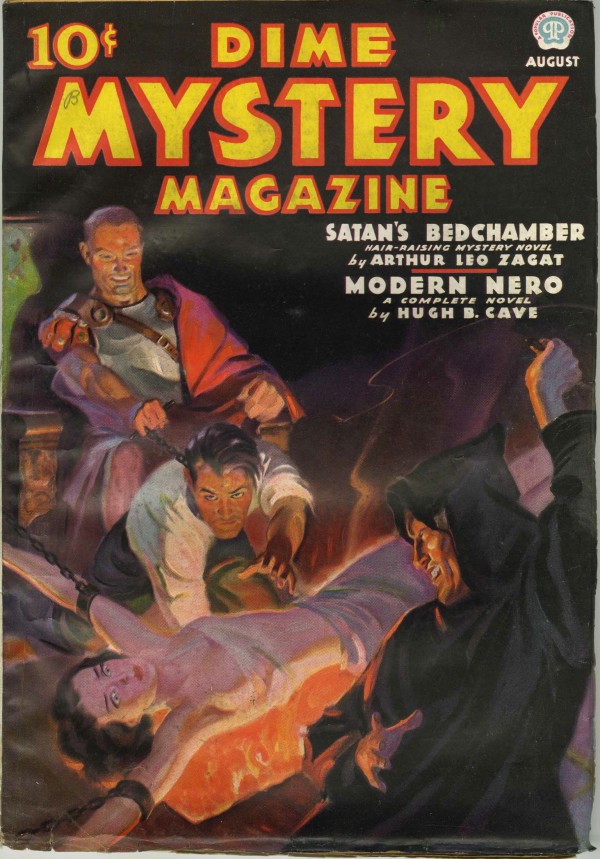
It look like our hero is willing to take on some serious hurt in hopes of rescuing this poor girl, and Mr. Nero is amused. A similar risk is posed on the unattributed July 1937 cover.
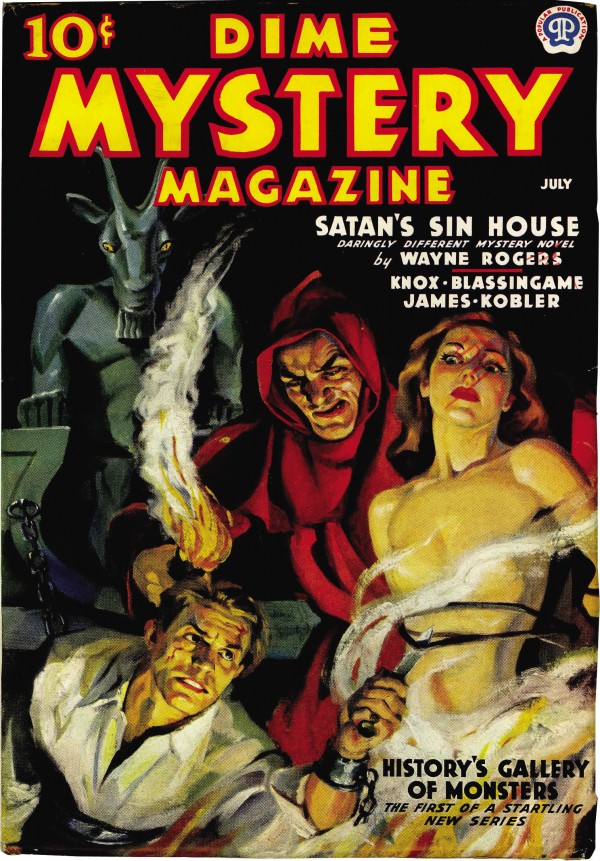
1937 must have been a big year for setting women on fire at Dime Mystery, because the December cover, which is full of peril, showing a hero not only willing to risk being burned, but also apparently being shot by an assailant behind a picture.
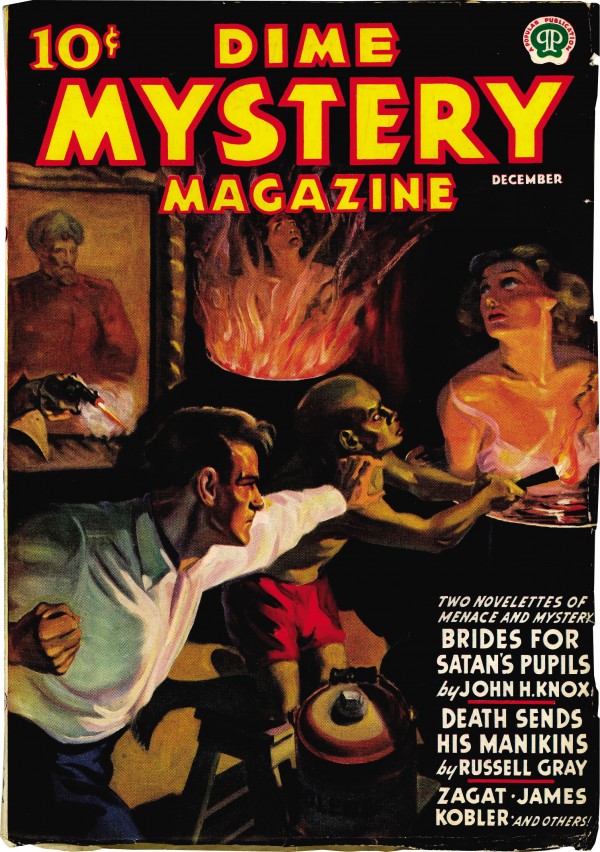
I don’t know who painted that cover, but there’s an interesting art-historical detail if you look at the faces of the women here, you notice that instead of being filled with panic, they seem to be calm and have their eyes cast upward, as if this is a painting of Christian martyrs. As such, this pulp painting participates in an unusually deep artistic tradition!

Felice Ficherelli, (1605 – 1660, Italian)
The Martyrdom Of St. Agatha
Source here.
Finally, there’s some real crazy going on in this meme from time to time. Take, for example, October 1935, painted by Walter M. Baumhofer.
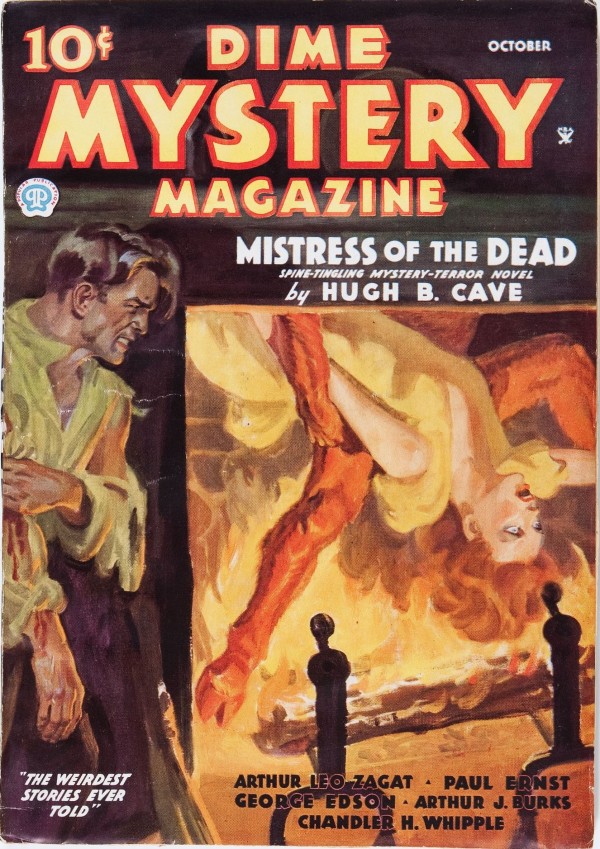
“May you burn. You and the horse you rode in on.”



